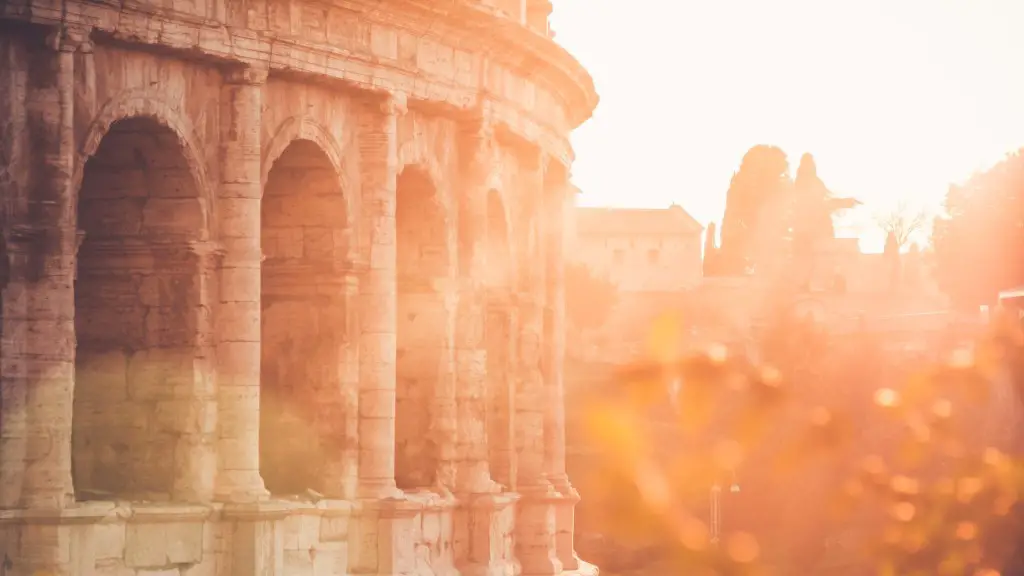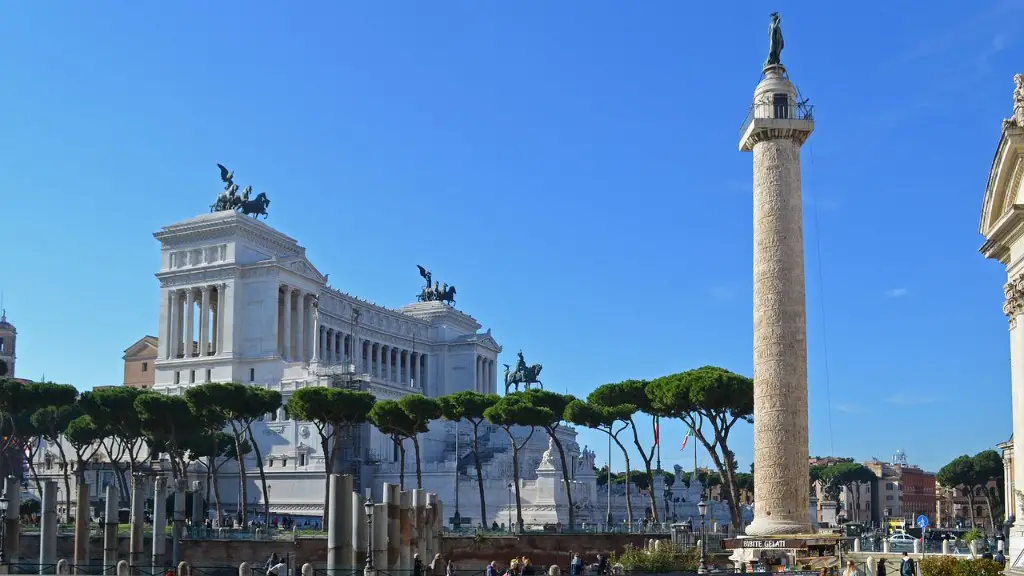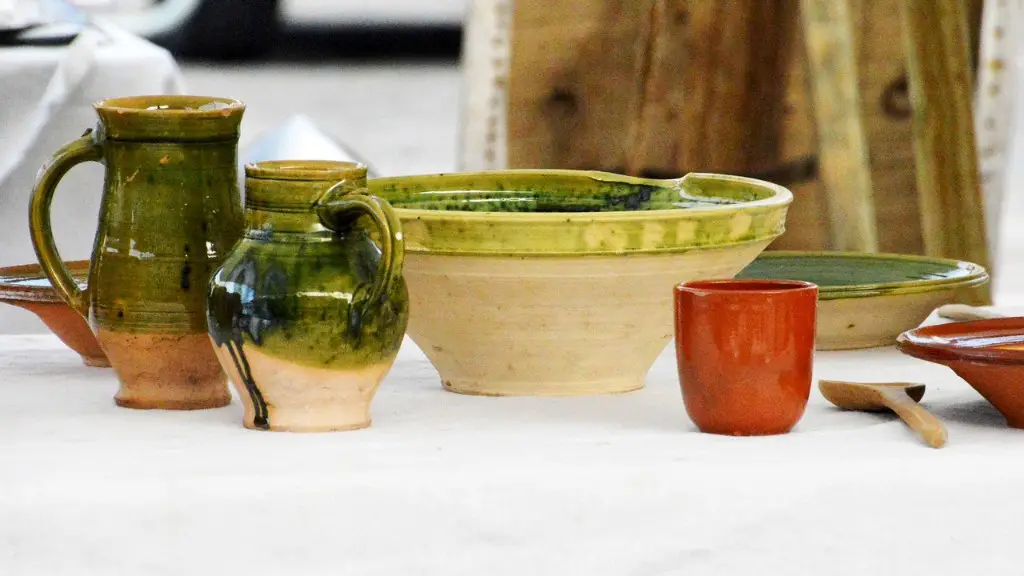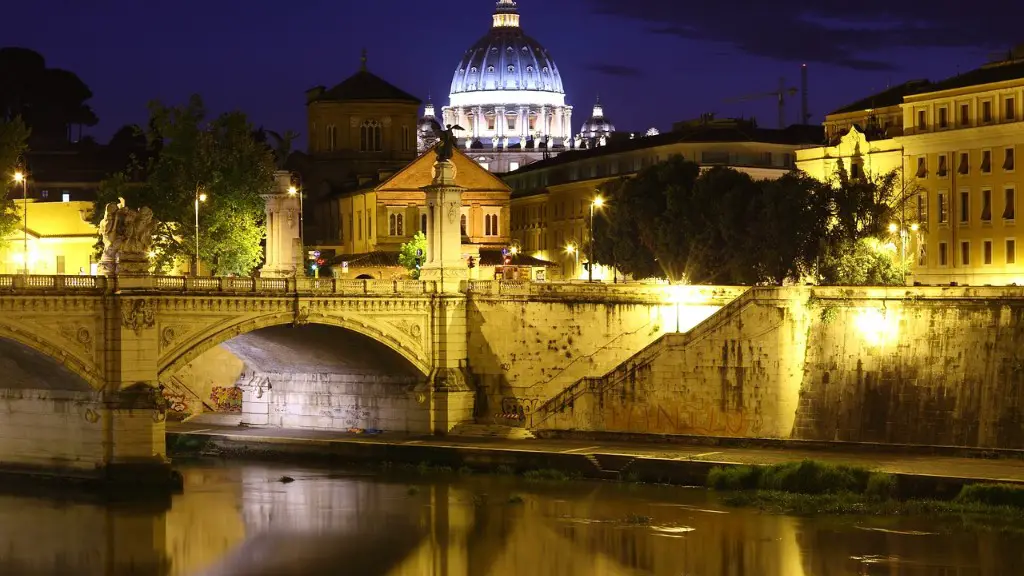Overview of Land Ownership in Ancient Rome
Ancient Rome was an advanced and complex society with a multitude of ways to own and control land. Land was the basis of wealth and power in Rome, and understanding who owned it is fundamental to getting an understanding of the Roman Empire and its political and economic systems. In Rome, land ownership was mostly concentrated in a few powerful families, and overall patterns of land ownership must be assessed in order to gain a deeper understanding of the social and political structure of ancient Rome.
In Ancient Rome, the entire population of the city was divided into four social classes. The highest social class was the Patricians, followed by the Equestrians, the Plebeians, and the Freedman. All these classes were able to own land, although some classes had more privileges than others. The Patricians and Equestrians, most of whom were members of the Roman Senate and landowners, were the main landowners.
The main type of land ownership among the Patrician class was private land ownership, which was divided into two types: publicus and privatus. Publicus was owned by the state and was used for public projects such as roads and temples. Privatus was owned privately and included private farms and estates. The Patricians were able to acquire large estates through inheritance, marriage, or taking possession of land that had no legal owner.
The Equestrian class had a different system of land ownership, as they could not own or control public land. Instead, these landowners focused on leasing or renting land. This was an important source of the income for the Equestrian class, as the rents they received from lessees and renters provided them with a regular income. Additionally, they could also acquire land through inheritance and marriage.
The Plebeians, the third social class, had little land ownership rights. This is because most of the land was in the hands of the powerful Patricians and Equestrians. However, the Plebeians could rent small plots of land in order to sustain themselves and their families.
Finally, the Freedman, the fourth social class, were enslaved people who had been freed or had purchased their freedom. Freedmen were allowed to own small plots of land, although it was often difficult for Freedmen to accumulate wealth or purchase large tracts of land.
The Social Structure of Ancient Rome
Ancient Rome was built on strict social structure, and the different classes had access to different types of land. This social structure was reinforced by laws that recognized certain rights and privileges for landowners who were members of certain classes. For example, while a Patrician could own land as an inheritance, or as a gift from the Senate, a Plebeian farmer would not be able to purchase land or gain access to inheritance. This was an effective way for the Patricians and Equestrians to maintain their power, and ensure that their wealth was passed on to their offspring.
Additionally, the land that was owned by the upper classes was usually used for extensive farming and agricultural practices, which made it difficult for the lower classes to make a living from their small plots of land. Furthermore, the legal system at the time was designed to favor the interests of the Patricians and Equestrians, and the Roman government gave them certain benefits, including tax exemptions and the right to exploit resources, that allowed them to increase their landholdings.
This system of land ownership created a society in which the Patricians and Equestrians held a disproportionate amount of wealth and power. This was an effective way of ensuring the dominance of the upper classes over the lower classes, and allowed them to increase their holdings of land and resources over time.
Legal System of Ancient Rome
The legal system in Ancient Rome was designed to ensure that the upper classes were able to accumulate and maintain wealth. For example, the law of usucapio, which was a form of preemption, allowed the Patricians and Equestrians to take possession of unclaimed land. This enabled them to gain control of large areas of land from weaker landowners or from those who had lost their land due to debt.
The legal system also protected landowners from external threats. For example, the Lex Licinia of 367 B.C. granted landowners the right to defend their property against any external threat. This law meant that landowners could not be forced to give up their land, and allowed them to protect their property and increase their landholdings.
Furthermore, the legal system allowed landowners to transfer their land to their heirs through inheritance laws. This ensured that the upper classes could pass on their land and wealth to their descendents, and thus the power of the Patricians and Equestrians was perpetuated.
Finally, the legal system was also used by the upper classes to increase their landholdings by leasing and renting land. This allowed the Patricians and Equestrians to rent out land to lessees or renters, which provided them with a regular income.
The Impact on the Lower Classes
The legal system and the structure of land ownership in Ancient Rome had a profound impact on the lower classes. The Patricians and Equestrians held a disproportionate amount of wealth and power, and the legal system was designed to ensure that their wealth and holdings of land were perpetuated. This meant that the lower classes had access to fewer resources, and were often excluded from the decision-making process.
Additionally, the Roman legal system was heavily biased towards the upper classes, and the laws were often used to protect their interests. This meant that it was difficult for the lower classes to protect their rights, and to accumulate wealth or purchase large tracts of land. This hindered their ability to gain economic security, and put them in a position of permanent subordination.
Furthermore, the agricultural system in Rome was based on the exploitation of the lower classes, who were forced to work on the land owned by the wealthy upper classes. They were paid very little for their labor, and had no control over the land or resources. This system created a sharp divide between the wealthy and powerful upper classes and the impoverished lower classes, and ensured that the lower classes remained in a state of poverty and subordination.
Conclusion
In Ancient Rome, land was the basis of wealth and power, and the ownership of land was concentrated in the powerful Patrician and Equestrian classes. This system of land ownership was reinforced by a legal system that protected the interests of the upper classes, and made it difficult for the lower classes to accumulate wealth or purchase large tracts of land. This created a sharp divide between the wealthy upper classes and the impoverished lower classes, and ensured that the upper classes maintained their wealth and power.




